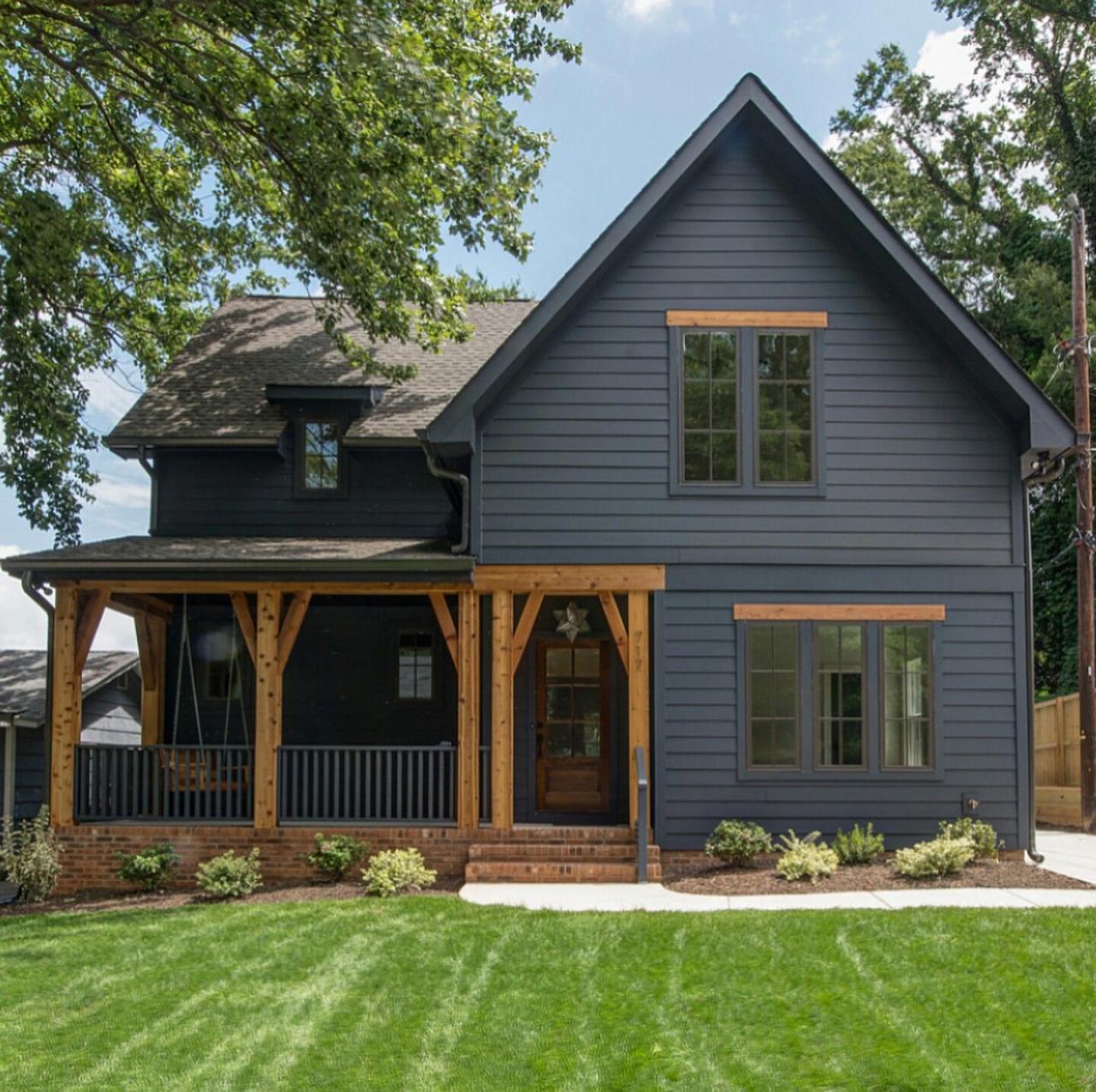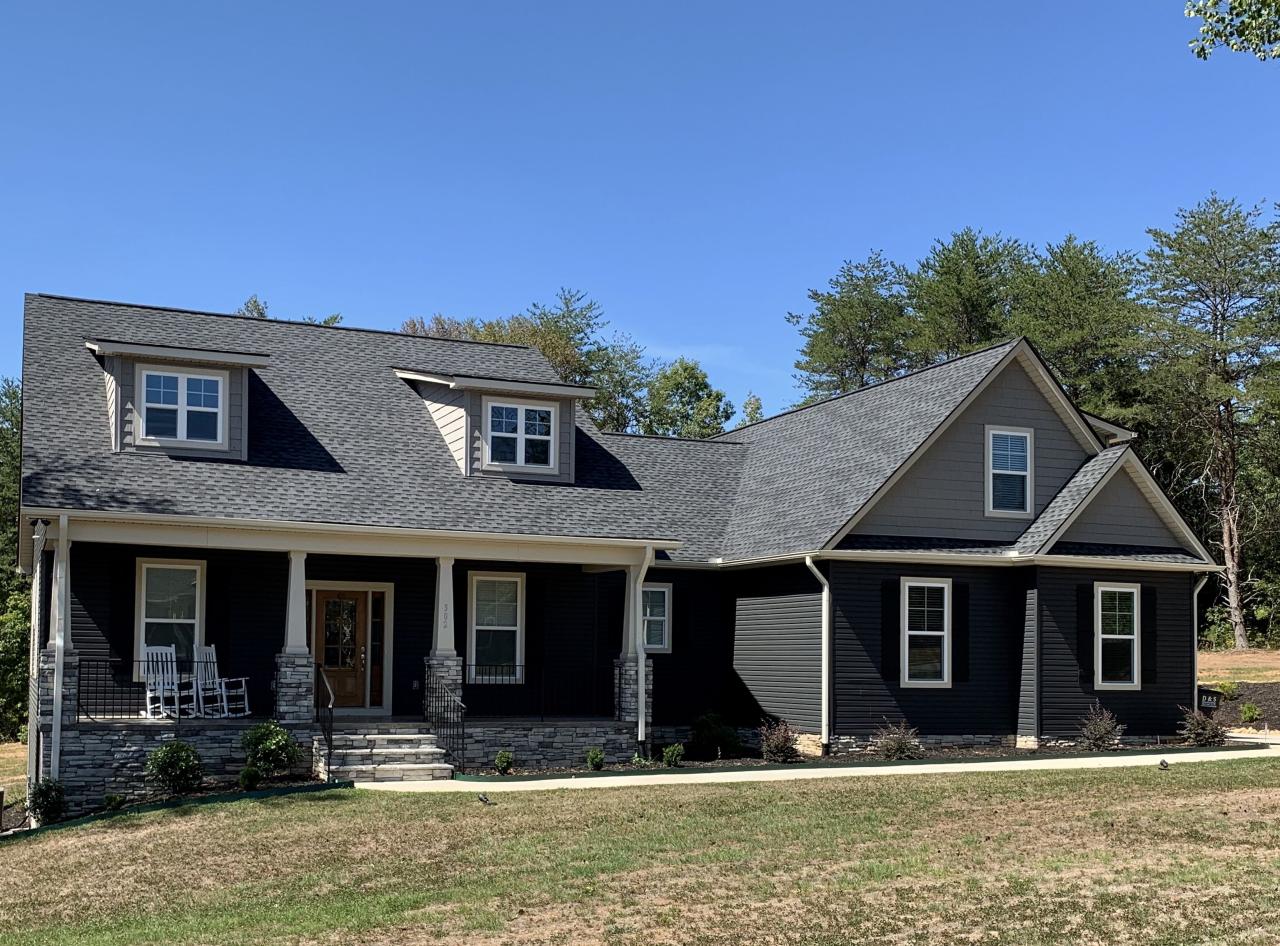Delving into the world of dark siding for houses, this introductory paragraph aims to intrigue and inform readers about the allure of using dark colors and materials in residential properties.
As we embark on this journey, we will uncover the benefits, design considerations, maintenance tips, and environmental impact of dark siding for houses.
Understanding Dark Siding for Houses

Dark siding for houses refers to the use of deep, rich colors such as charcoal, navy, or dark green for the exterior cladding of residential properties. This trend has gained popularity in recent years due to its modern and sophisticated look, as well as its practical benefits.Dark siding offers several advantages for residential properties.
Firstly, it provides a striking contrast against lighter elements such as trim or landscaping, creating a visually appealing facade. Additionally, dark colors can help absorb heat, making the house more energy efficient by reducing the need for cooling in hot climates.
Dark siding is also known for its ability to hide dirt and stains better than lighter colors, requiring less frequent cleaning and maintenance.Some popular dark siding colors include shades of black, gray, blue, green, and even dark red. Materials commonly used for dark siding include vinyl, fiber cement, wood, and metal.
Each material offers unique advantages in terms of durability, cost, and maintenance requirements.
Examples of Popular Dark Siding Colors and Materials
- Black: Black siding can create a sleek and modern appearance, complemented by white or metallic accents for a high-contrast look.
- Charcoal Gray: This versatile color pairs well with a variety of architectural styles and can give a sophisticated edge to any home.
- Dark Blue: Navy or deep blue siding can evoke a sense of calm and elegance, especially when combined with white trim.
- Dark Green: Forest green or olive tones can blend seamlessly with natural surroundings, creating a harmonious and earthy aesthetic.
Design Considerations and Aesthetics
When considering dark siding for your house, it's important to understand how it can impact the overall look and feel of your home. Dark siding can create a dramatic and modern aesthetic, adding depth and sophistication to the exterior of the house.
However, it can also make a house appear smaller or absorb more heat than lighter-colored siding.
Choosing the Right Dark Siding Color
When choosing a dark siding color, it's essential to consider the architectural style of your home. Different dark shades can complement different styles of houses. For example, a deep charcoal or black siding can create a sleek and contemporary look for a modern home, while a dark blue or green siding can enhance the traditional charm of a colonial or Victorian-style house.
It's important to choose a color that harmonizes with the existing elements of your home, such as the roof, trim, and landscaping.
Contrast with Exterior Elements
The contrast between dark siding and other exterior elements like trim, roof, and landscaping can create a striking visual impact. For example, pairing dark siding with white trim can create a classic and timeless look, while combining dark siding with a metal roof can add an industrial and edgy feel to the house.
It's important to consider the overall color scheme and balance of the exterior to ensure a cohesive and harmonious appearance.
Maintenance and Durability

When it comes to dark siding for houses, maintenance and durability play a crucial role in ensuring the longevity and appearance of the exterior. Understanding the specific requirements and factors that impact these aspects is essential for homeowners considering dark siding options.
Maintenance Requirements for Dark Siding
- Regular Cleaning: Dark siding tends to show dirt, dust, and debris more visibly compared to lighter options. Regular cleaning with a gentle detergent and water can help maintain its appearance.
- Inspection for Mold and Mildew: Dark siding may be more prone to mold and mildew growth due to reduced sunlight exposure. Periodic inspections and prompt removal of any growth can prevent damage and discoloration.
- Repainting: Over time, dark siding may fade or show signs of wear. Repainting every 5-7 years can help refresh the color and protect the material underneath.
Materials Impacting Durability
- Vinyl: Vinyl dark siding is durable and low-maintenance, but prolonged exposure to sunlight can cause fading. Opting for high-quality UV-resistant vinyl can enhance durability.
- Fiber Cement: Dark fiber cement siding is resilient and resistant to rot, pests, and fire. Proper installation and occasional repainting can extend its lifespan.
- Wood: Dark stained wood siding offers a natural and rustic look but requires more maintenance. Regular staining and sealing can protect the wood from moisture and pests.
Protecting and Prolonging Lifespan
- Proper Installation: Ensure dark siding is installed correctly to prevent issues such as warping, buckling, or moisture penetration that can compromise durability.
- Ventilation: Adequate ventilation behind the siding can reduce moisture buildup and prevent issues like rot or mold growth, extending the lifespan of the material.
- Trim Maintenance: Pay attention to the trim around windows, doors, and corners, as these areas are prone to damage and can affect the overall durability of the siding.
Energy Efficiency and Environmental Impact
Dark siding can have a significant impact on the energy efficiency of a house, depending on the climate it is installed in. In colder climates, dark siding can absorb more heat from the sun, helping to keep the interior of the house warmer and reducing the need for heating.
On the other hand, in warmer climates, dark siding can absorb heat, making it more difficult to cool the house and potentially increasing the need for air conditioning.
Energy-Saving Properties in Different Climates
- In colder climates, dark siding can help reduce heating costs by absorbing heat from the sun and keeping the interior of the house warmer.
- Conversely, in warmer climates, dark siding can increase cooling costs by absorbing heat and making the house warmer.
- Proper insulation and ventilation are key factors in maximizing the energy-saving properties of dark siding in any climate.
Environmental Implications of Dark Siding
- Choosing dark siding over lighter alternatives can have environmental implications due to the higher heat absorption and potential increase in energy consumption.
- Increased energy consumption can lead to higher greenhouse gas emissions, contributing to climate change and environmental degradation.
- It is essential to consider the long-term environmental impact when selecting dark siding for a house.
Sustainable Options for Dark Siding Materials
- Opting for sustainable materials like recycled wood, fiber cement, or metal can minimize the environmental impact of dark siding.
- These materials are durable, low maintenance, and eco-friendly, making them a sustainable choice for environmentally conscious homeowners.
- Choosing dark siding materials with high recycled content or that are easily recyclable at the end of their lifespan can further enhance their eco-friendliness.
Ultimate Conclusion

In conclusion, dark siding offers a unique aesthetic appeal, durability, and energy efficiency for residential properties. By choosing the right color and material, homeowners can enhance the beauty and sustainability of their homes.
FAQ Corner
What is dark siding?
Dark siding refers to exterior cladding materials in deep shades like charcoal, navy, or black, creating a striking contrast on houses.
How can I choose the right dark siding color?
Consider the architectural style of your house and the surrounding elements to select a dark siding color that complements the overall aesthetic.
Are there sustainable options for dark siding?
Yes, some dark siding materials like fiber cement or recycled wood offer eco-friendly choices for environmentally conscious homeowners.


